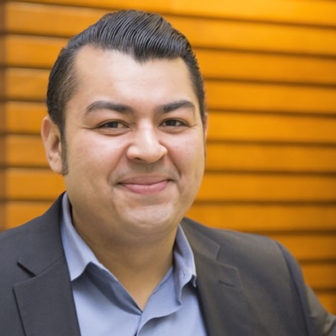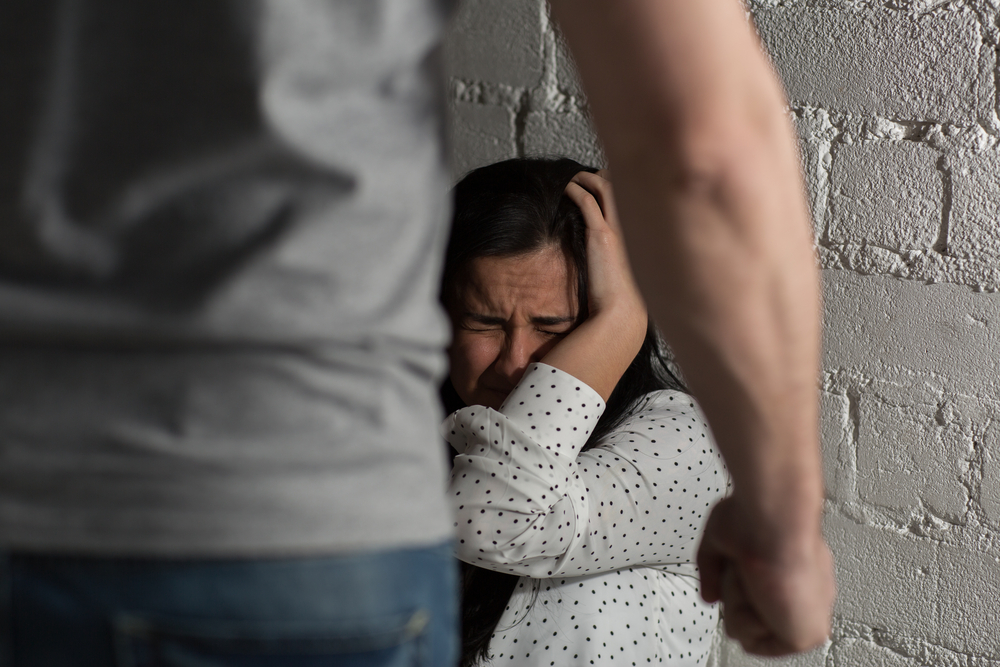Recently a trial judge in Washington state’s King County Superior Court discussed his three years presiding in juvenile court. Roger Rogoff described this time as “the most emotionally-charged, inspiring and terrifying of my 25-year legal career,” citing the complicated and conflicting nature of the juvenile justice system as well as the tension, apprehension and nuances of decision-making in this environment.
While Rogoff repeats a common plea for more resources for juvenile justice, he also argues a powerful case for needing more expertise, support and thoughtful consideration. He states, “I will not miss the lack of tools and answers for our homeless, poverty-stricken and abused youth,” among the obstacles of the system and of working with young people.

Janelle Hawes
Some areas are trying to reform their local juvenile justice systems. Among these efforts, King County (Seattle) is opening the Children and Family Justice Center later this year, which focuses on rehabilitative and therapeutic programming with 100 fewer beds than its predecessor and continues the area’s longstanding efforts for alternatives to detention for youth. Additionally, historic efforts are underway in San Francisco as the city’s Board of Supervisors recently voted to close the city’s juvenile hall by the end of 2021. This decision still has numerous potential downfalls to survive before it is fully realized, yet the intention to stop incarcerating juveniles and alternatively develop and utilize community-based facilities and supports is noteworthy.

Jerry Flores
However, while places such as these engage in efforts to reform their juvenile justice systems, Rogoff reminds that nothing within this system is or will be simple. “…[T]hose who work with these kids must decide each day how to respond to each youth, each victim, each community, each crime. No answer fits neatly into any strategic plan or slogan. Rather, they are imperfect, well-intentioned, stomach-churning decisions designed to help that particular community, that particular victim and that particular youth.” Further, modification of a juvenile justice system still comes with the baggage and complicated nature of how youth become involved in this system or needing these alternatives in the first place. Rogoff discusses qualities of juveniles and their circumstances and says, “they face obstacles the majority of us never had to face.”
Abuse comes from family
It appears that the ways in which youth can become involved in the system are as varied as the individuals themselves. However, when evaluated on a macro level, some strong predictors emerge, including experiencing abuse in the home.
For more information on dual status youth, go to JJIE Resource Hub | Dual Status Youth
Conducting interviews with 33 girls at a juvenile detention center in southern California, we explored the experiences of girls involved in both the juvenile justice and foster care systems.
Overall, the girls in this study had to negotiate constant mistreatment across various institutions and by multiple people with little help or relief. Furthermore, 14 of the girls discussed experiences of abuse as a precursor for their first contact with the criminal justice system and eventual incarceration, providing a unique opportunity to hear how abuse often lead to criminal justice involvement in the girls’ own words.
Focusing on first criminal justice system contact, we find that often involvement in the criminal justice system was connected to the girls fighting back against abuse, generally inflicted by their parents or guardians. For these girls, there was little escape from the abuse they experienced. Diana, age 17, described her experience:
“They [police] were like hey you fought with your mom. I was like: ‘what the fuck, like look at my face she beat me up.’ They are like ‘She called the cops on you, so you are at fault cause if she beat you up why didn’t you call the cops on her?’ Dude I don’t want to get my mom in trouble and plus anyways it’s my word against her and although I am the one looking all torn up.”
Debby, 14, recounts:
“Me and my mom used to argue really, really bad and I used to be short, tiny, like this short, and my mom was bigger than me so she thought, you know, she could take advantage of that. [inaudible] I love my mom, my mom used to beat the f-lip out of me, like crap out of me and one day I pulled a knife on her and I told her to stop and they put me in a damn mental institution.”
Abused girls ignored
Even when girls reported their experiences to institutional actors they were often ignored, returned to abusive homes or punished further. For example, Aracely, 19, described the first time she was taken to juvenile detention after speaking with officers:
“... I had went to school, ’cause um, I was scared of going back home. I didn’t wanna go back home with my dad [because of abuse] … I was like, oh I don’t wanna go with my dad, like, I don’t really wanna go with him and then they’re like ‘we’re gonna talk to your dad’ and they came back, they came back into the room and they told me to get up and put my hands behind my back and that’s when I got arrested.”
In the above quote Aracely describes choosing not to return home to avoid further abuse from her father. After going to school, she told a criminal justice agent on her campus that she did not want to return home. Eventually the officer escorted her home and spoke with her father in person. The officer decided that Aracely’s behavior constituted running away, they arrested her, and she was held in secure detention for the first time.
Demonstrating the complicated nature of juveniles’ lives and experiences, as noted by Rogoff, Annabel, age 17, says:
“Like, my dad overdid it on me ... he's never hit them. He never cussed them out. Nothing like that. I was the only one, like, he excluded from the family. And I was real close to my mom. Me and my mom were so close but she never did anything 'cause the abuse would turn to her if she said anything or spoke up. And I didn't — I was always told ‘You can't rat on your dad.’ So I never really said anything but I did have, like, a couple of, like — when I would go to school they would write it down. I've had social workers come to the house and my father would always ‘Oh, no. She got in a fight at school.’ Or something. So, that's the way it was with me and my father. It was horrible. …”
Annabel goes on to describe how the beatings she received from her father contributed to her first arrest and subsequent incarceration:
“Me and my father have never been close. Um, and I would always — I felt left out so I’d always go out there on the streets. I would run away a lot and then my father would kick me out. He would call the cops and say that I ran away and I started getting in trouble with the cops.”
Including those quoted, 14 of the girls in this study experienced abuse at the hands of their parents. When they attempted to fight back against abuse, avoid their homes or parents, or reported their abuse to institutional actors like police and social workers, the girls often became involved in the juvenile justice system and detention.
Yet, research has long shown that any juvenile detention put the youth at risk for further incarceration and for other potential damage to their well-being and outcomes. Leticia Silot, a formerly incarcerated youth, wrote about her time in juvenile hall, her feelings and experiences there, and called for its abolishment.
Recalling her feelings of hopelessness, vulnerability and lack of control in her life, Silot suggested that instead of spending superfluous amounts of money on detaining young people in a system that only harms, such money should go to programs and resources that “actually help young people find a place and a voice in the world, instead of ruining their lives.” If asked, we anticipate the girls in our study would agree, particularly given their need for therapy and support systems after suffering abuse in their homes.
Janelle Hawes, Ph.D., is an assistant professor at the University of Washington Tacoma in the School of Social Work and Criminal Justice. Her areas of interest include inequities in education experiences and outcomes, mental health and well-being, and the criminal justice system, focusing on marginalized populations and practical applications.
Jerry Flores, Ph.D., is an assistant professor in the sociology department at the University of Toronto. He recently published his first book, “Caught Up: Girls, Surveillance and Wraparound Incarceration.”

Pingback: Does Abuse Lead to Incarceration For Girls? Usually Yes | Survived + Punished
Enjoyed reading the article.
In an effort to promote positive parenting and prevent adverse childhood experiences, every school, daycare, place of worship, clinic, business, organization, agency, doctor’s office, hospital, etc. should have sets of these fifty-three parenting norms bumper stickers on counters and tables so parents, customers, clients, and patients can help themselves. Parenting norms on vehicles will be read 1000s of times, by 1000s of people of all ages, for years to come.
What a unique and powerful way to get quality parenting information out to the community!
Visit advancingparenting.org to read about what we do, why we do it, our big plans for the future and how to order sets of the fifty-three parenting norms bumper stickers.
I’ve lived through this myself and seen it with other kids. My brother was constantly in and out of juvenile hall. My mother was very abusive. She hung me in the closet when I was 8 or 9 and my brother had to pull me out to save me. The trauma that we went through should have been treated, not compiled against us with an introduction into mental health facilities and the juvenile justice system. This just furthermore told us that we didn’t matter to out parents and we certainly didn’t matter to the police or any social service. That made us feel very alone. Unfortunately my brother didn’t fare as well as I did and his ACEs brought him to his demise at 2 weeks before his 39th birthday. That is way too young for a man to die of a stroke.